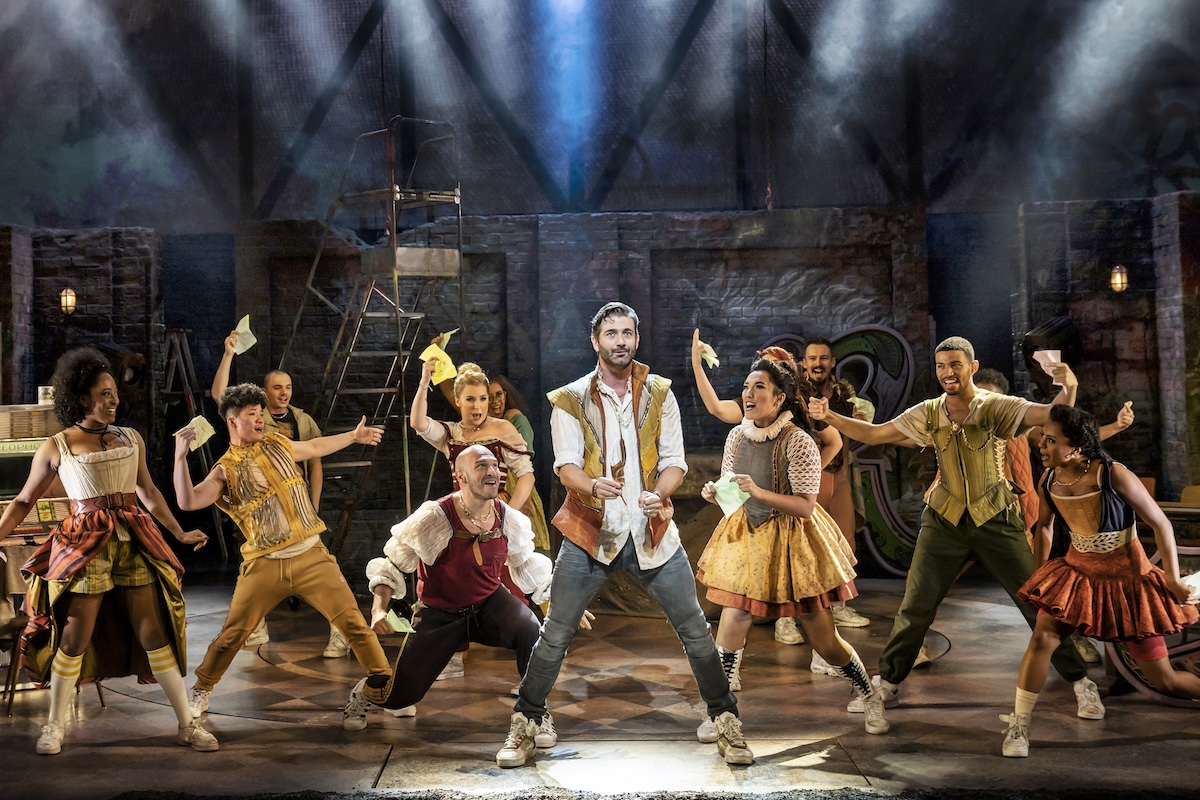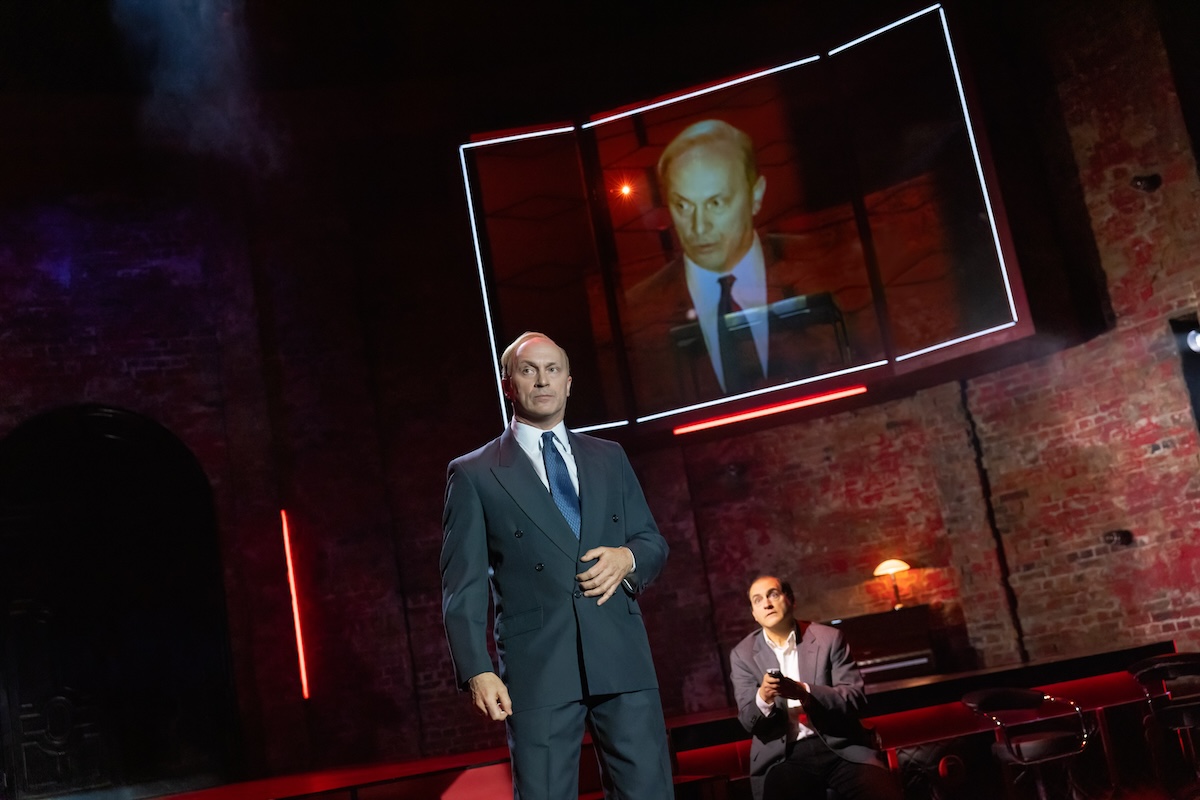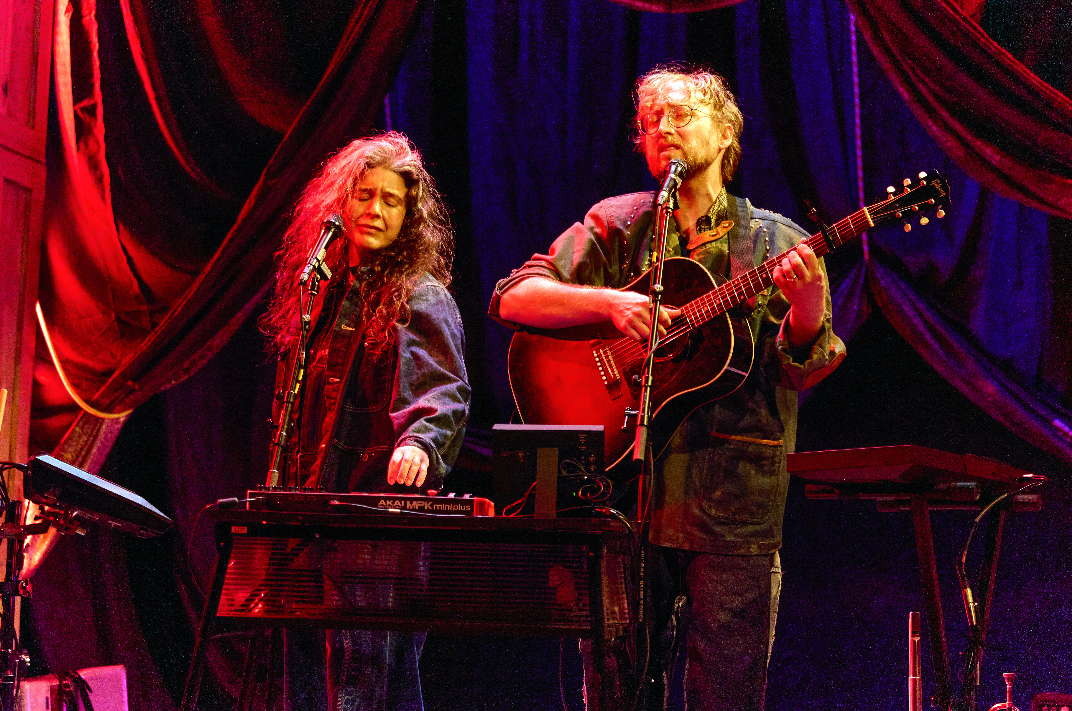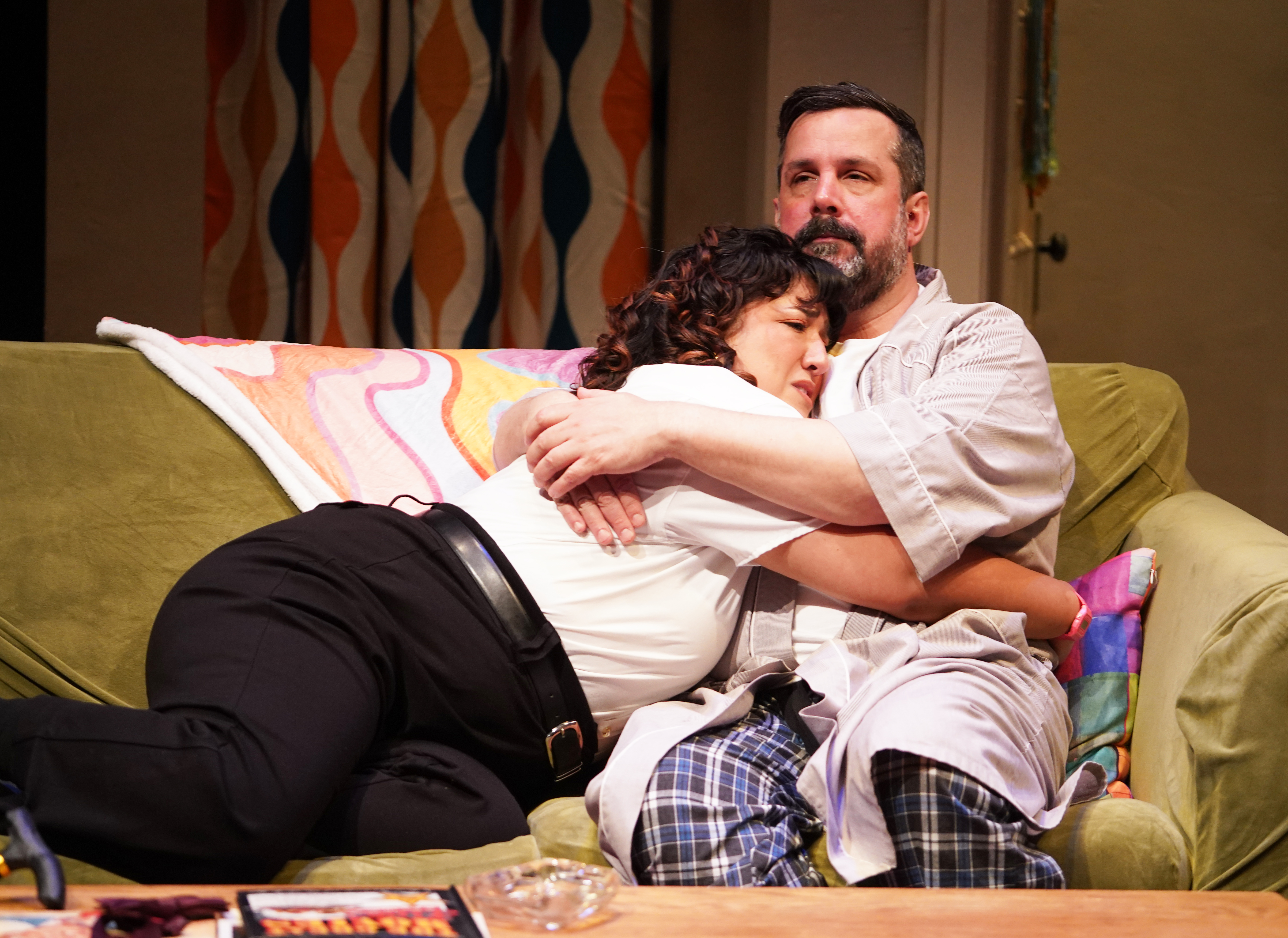Fashions for Men

(© Richard Termine)
Anyone who loves watching reruns of the quirky British sitcom Are You Being Served? knows that retail stores are prime locations for comedy. Mint Theater Company has uncovered one such gem from the oeuvre of Hungarian playwright and novelist Ferenc Molnár — Fashions for Men — which premiered at Budapest's National Theater in 1917 and ran on Broadway in 1922. The Mint has staged this delightful play in a beautifully designed and performed production directed by Davis McCallum and, with a little hem here and a stitch there, has tailored a vintage classic for modern audiences, while still remaining true to its time and place.
Peter Juhász (Joe Delafield) owns a haberdashery that's teetering on the brink of bankruptcy, despite financial backing from a wealthy Count (Kurt Rhoads). The problem is that Peter is too nice to hard-up customers. His not-so-nice wife, Adele (Annie Purcell), who works with him, soon reveals that she's running away with snooty salesman Oscar (John Tufts), but being a softy, Peter forgives her.

(© Richard Termine)
When the business goes belly up, the Count invites Peter to work for him on his cheesemaking estate. Peter's employee Paula (Rachel Napoleon) comes along to cash in on the Count's affection for her, even as she soon learns her heart lies elsewhere. Meanwhile Peter, trying to bounce back from his personal and professional failures, begins to recognize that his fresh start is right in front of him. Funny and romantic complications ensue as kindhearted Peter tries to secure the business he lost and the woman he loves.
This near flawless production of Fashions for Men delights with its polished dialogue, well-paced action, and solid performances. Delafield gives a wonderfully frustrating performance as Peter, charming everyone with his Jimmy Stewart likability, until his unshakable naïveté makes us want to give him a Cher slap and scream "Snap out of it!" Tufts' loathsome, selfish Oscar deserves a slap for a different reason, but he's deliciously annoying to watch along with Purcell as Peter's crocodile-tear-shedding wife.
Napoleon, as the love interest, ably volleys the audience's sympathies as her Paula cynically pursues an aristocratic life with the Count (Rhoads' comic timing is impeccable) and later turns to a purer pursuit of love. Even the smaller roles pack a wallop: Jeremy Lawrence, as the store's elderly busybody, Philip (whom McCallum has hilariously peeking around corners), and Mark Bedard, in multiple minor roles, score some of the show's loudest laughs.
In typical Mint fashion, the sets are a triumph, earning applause from the audience at the beginning of each act. Daniel Zimmerman's haberdashery tips its hat to the early 20th century with an exquisitely detailed store chockablock with fabrics, gloves, and handkerchiefs (the ties on display look modern, but we're willing to suspend disbelief). The rustic second-act set, depicting the Count's estate, has numerous lighthearted touches, including a lovingly painted portrait of a cow, soon complemented by a comical moo when the Count's outside door is opened (spot-on sound design by Jane Shaw).
Everyone who works in the store looks as if they stepped out of Harper's Bazaar, especially the women with their stylish dresses (costumes by Martha Hally) and period hairstyles (wigs and hair by Robert-Charles Vallance). The dialogue flows easily thanks to a few alterations to Benjamin Glazer's original Broadway translation by artistic director Jonathan Bank (with help from Agnes Miemitz and Gábor Lukin) that allows the language to resonate with American ears without losing its old-time charm. One might wonder how a story that takes place in a Hungarian haberdashery could possibly suit a 21st-century American audience, but the Mint's production fits like a glove.











